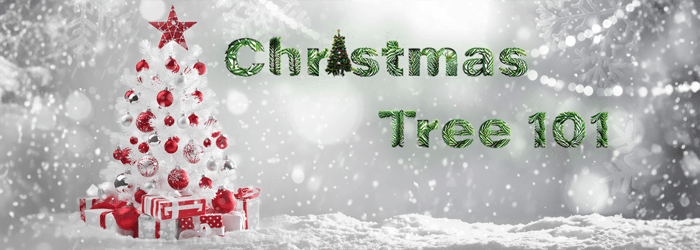Not one year has passed without us talking a little bit about Christmas trees during the holidays, and we’re not the only ones. The decorated evergreen has been around for a long, long time. Ancient peoples, Egyptians, for example, used the evergreen boughs to celebrate the winter solstice. According to the National Christmas Tree Association, the first decorated tree was recorded in Riga, Latvia, in 1510. In America, the tree started becoming a fixture in the early 1800s, having been introduced by German immigrants. It wasn’t until the 1850s that our beloved Christmas trees began their commercial debut.
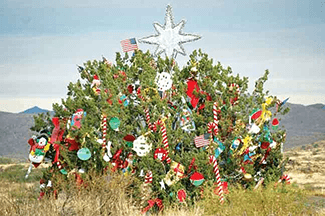
White House History says the first known Christmas tree in the White House was placed upstairs in the Second Floor Oval Room (then used as a family parlor and library) in 1889 (during the Benjamin Harrison administration). It was decorated with candles for the Harrison grandchildren.
As an iconic symbol of the season, our trees take on thousands of different looks across the country. Do you remember the Arizona icon, “Scrubby,” the decorated Juniper tree just north of Sunset Point on I-17? Tragically, a wildfire took that symbol of hope and mystery from us a few years ago. In light of all that, we thought it would be fun to have a slightly different look at this holiday symbol this time of year.
Tree Decorations
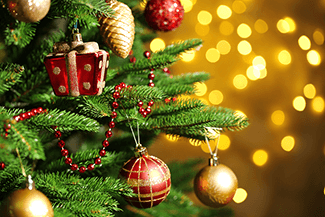 Each year, the elusive “powers that be” select a color type for the Christmas theme. Nearly every company that deals with color, from paint, to clothing, to decorations, puts out its own color of the year. We all know and associate traditional Christmas colors as red and green. The origins of using those colors are attributed to the holly plant with its red berries. This plant was used as a symbol of hope during the winter by the Celts and probably by hundreds of other cultures, as well.
Each year, the elusive “powers that be” select a color type for the Christmas theme. Nearly every company that deals with color, from paint, to clothing, to decorations, puts out its own color of the year. We all know and associate traditional Christmas colors as red and green. The origins of using those colors are attributed to the holly plant with its red berries. This plant was used as a symbol of hope during the winter by the Celts and probably by hundreds of other cultures, as well.
How trees are decorated has changed over the years.
When first introduced to America, the common practice was to adorn the tree with fruits, nuts, and other confections. That practice is not as common now, as we tend to put up a tree several weeks before Christmas Day. The fruit might not make it that long. In modern times, we tend to use ornaments both handmade by family members and handmade ornaments sold commercially, as well as mass-produced ornaments. In Arizona, a common theme is the cactus-shaped ornaments that seem to be indigenous to our home state. Most Arizona-themed ornaments have a cactus. Arizona Highways sells many beautiful ornaments.
Electric lights have thankfully replaced candles for tree lighting.
Single-color, multi-color, incandescent, and LED lights are available to make our Christmas trees come alive with strings of lights wrapped around the tree in patterns or randomly attached. Once the string is untangled (an awesome test of patience), the head decorator will decide!
Tree Themes
Decorating trees can be a lot of fun. Having a theme for the decorations can make the planning and the decorating process exciting. Themes vary in color, where lights and ornaments can match, or you choose your favorite Christmas story as a theme.
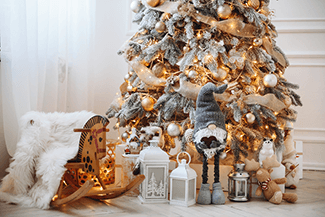
We spent some time surfing around for ideas to share with y’all and we found the experts at Jolly Festive. We thought we were pretty creative, but in reality, had no idea the breadth of creativity possible for decorating a Christmas tree. Jolly festive indeed!
Themes revolve around a tree decorated with consistent types of adornment, whether color, style, or lighting. Oh yes, that theme may or may not be carried throughout the whole home. Telling a story with your decorations can be quite a bit of fun. People collect ornaments from their travels, others, their favorite sports teams, cartoon characters, and so on. The sky’s the limit!
Best Live Trees
We have always wondered what the most popular evergreen is for a Christmas tree.
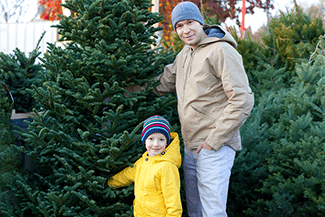
Before getting into that, and being Arizona folk, let’s acknowledge that some of us use desert vegetation instead of evergreen. Witness the giant tumbleweed tree in Chandler. That being said, let’s look at the more traditional tree types.
We turned to the knowledge of the National Christmas Tree Association to learn more. Just about every possible species of evergreen tree has been and still is used as a Christmas tree. The most popular come from the fir family, with Balsam, Douglas, and Noble firs being the more popular types.
Trees are commonly grown on tree farms and, like many other crops, are harvested when they reach a certain height and maturity. Tree species are chosen for their conical shape, ability to retain their needles, and their fragrance. How many of us still associate the smell of a tree with our own Christmas traditions?
Artificial Trees
No discussion of “Christmas Trees 101” would be complete without the artificial Christmas tree. Millions and millions of households across the globe have an artificial tree as their holiday centerpiece.

Historically, since the 1850s, trees were randomly harvested in our American forests. Around the 1880s to 1890s, those random trees were becoming scarce, and the artificial tree was introduced. There are benefits from a conservation perspective, and they can be quite realistic, or represent a theme, as mentioned earlier.
An additional convenience is not having to shop for a tree every year. Bonus: this saves money in the long run and maintaining the tree during the display season is simpler.
Safety
We have written several articles about caring for your Christmas Tree. Let’s reiterate some of those safety tips here:
- Keep your tree base in water. A couple inches should do. Check the water every day.
- Feel the needles. Are they moist and staying connected to the branches? Dry trees can catch fire, and they will burn VERY quickly.
- Keep the tree and anything flammable at least three feet away from any open flame; fireplaces and candles included.
- Check all electrical connections around the tree, particularly the lights. A short can ignite a fire.
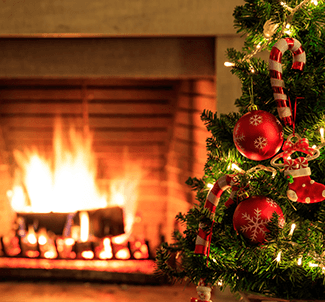
- Make sure the lights you use do not get too hot. Proper tree lights are typically designed for trees to prevent this issue. Be skeptical of discount Christmas lights and make sure they have a product safety testing logo, either from Underwriter’s Laboratory(UL) or Intertek (ETL Semko).
- Indoor and outdoor lights are not interchangeable. Use lights specifically made for indoor use inside, and ones made for outdoor use outside.
- Never use frayed light strands. Replace them. Buying new lights is a lot cheaper than fixing fire damage.
- Turn off and unplug the lights when you leave the house or go to bed.
- Keep electric cords away from pets and kids. Make sure they are not a trip hazard.
- Do not overload an extension cord strip our outlet.
Lastly, if your tree dries out, it becomes a fire hazard. Replace it.
At Rosie On The House, we want y’all to have a beautiful, joyous, and most of all, safe holiday!
###
Homeowner Handbook | #ChristmasTree101
PODCAST
The decorated evergreen has been around for a long, long time. In light of that, we thought it would be fun to have a slightly different look at this holiday symbol with tips to keep your real tree from drying out. Electrical check for those holiday lights. Plus homeowner questions about GFCI outlets, shower replacement and a murphy door.
Podcast Archive With Expanded Content and Resources
PHOTO CREDIT
- Shutterstock

